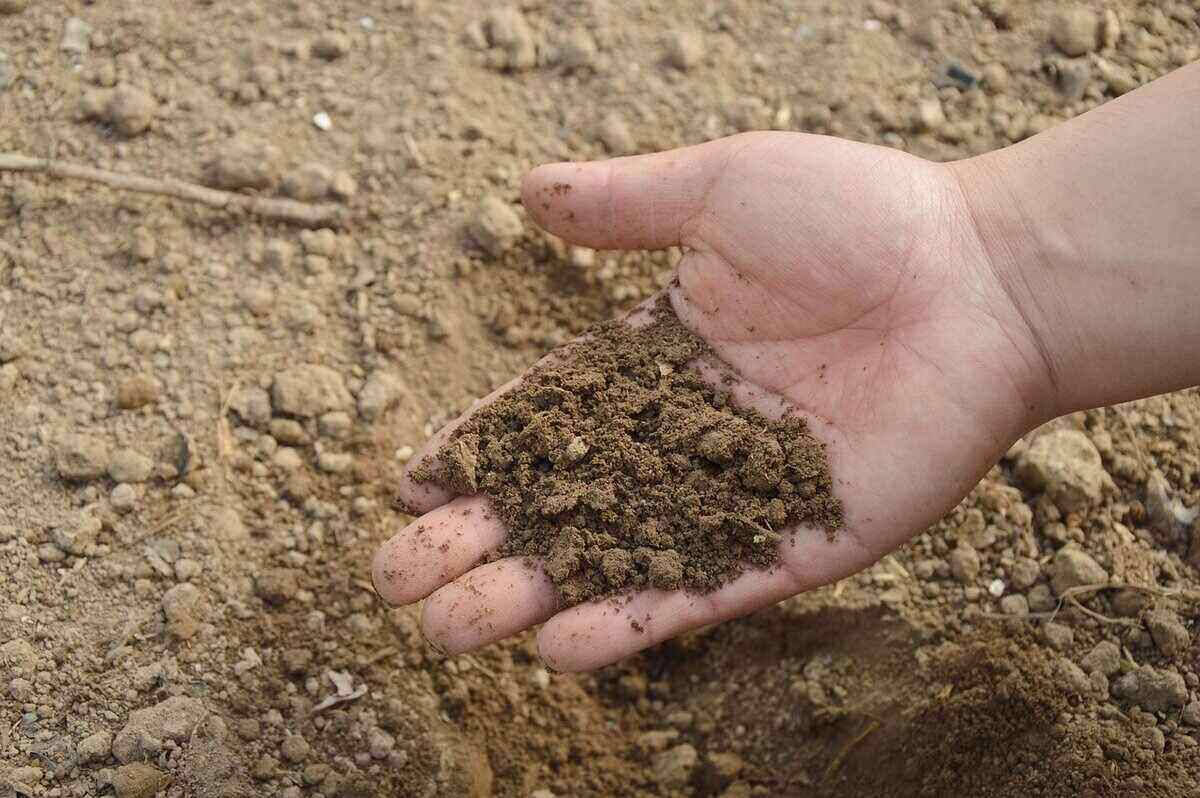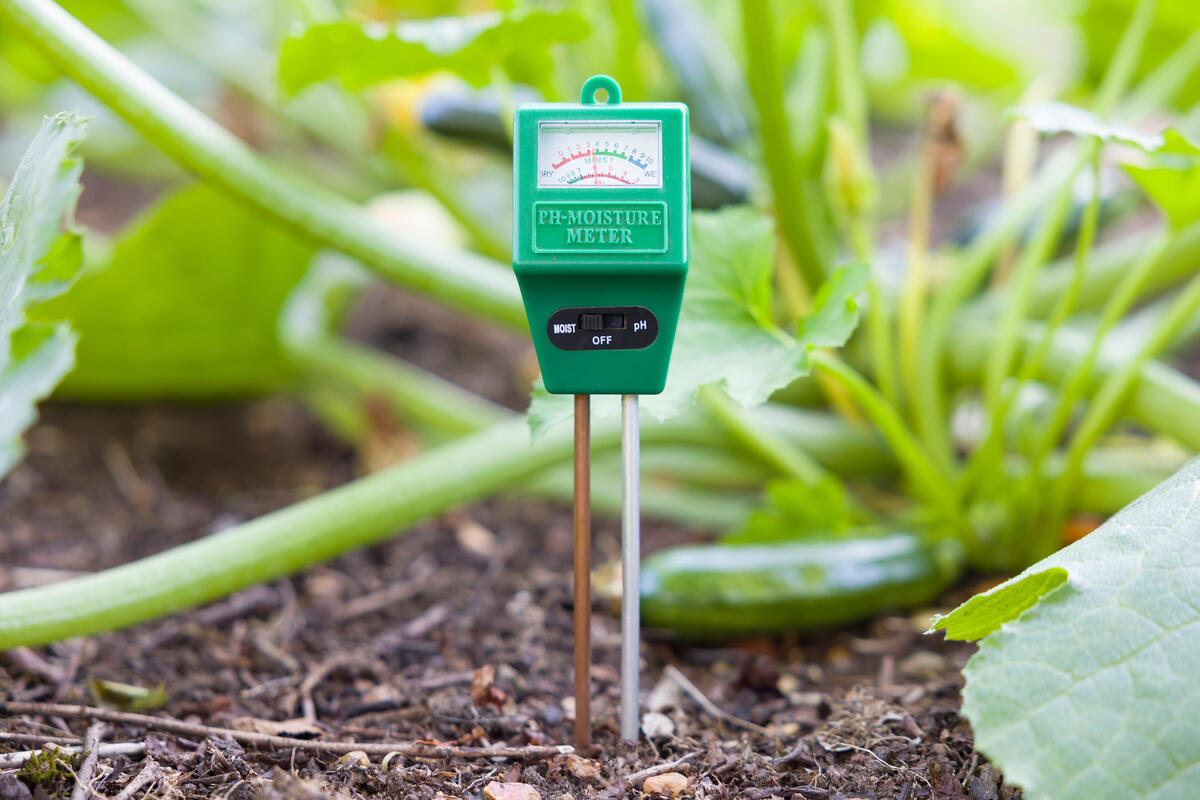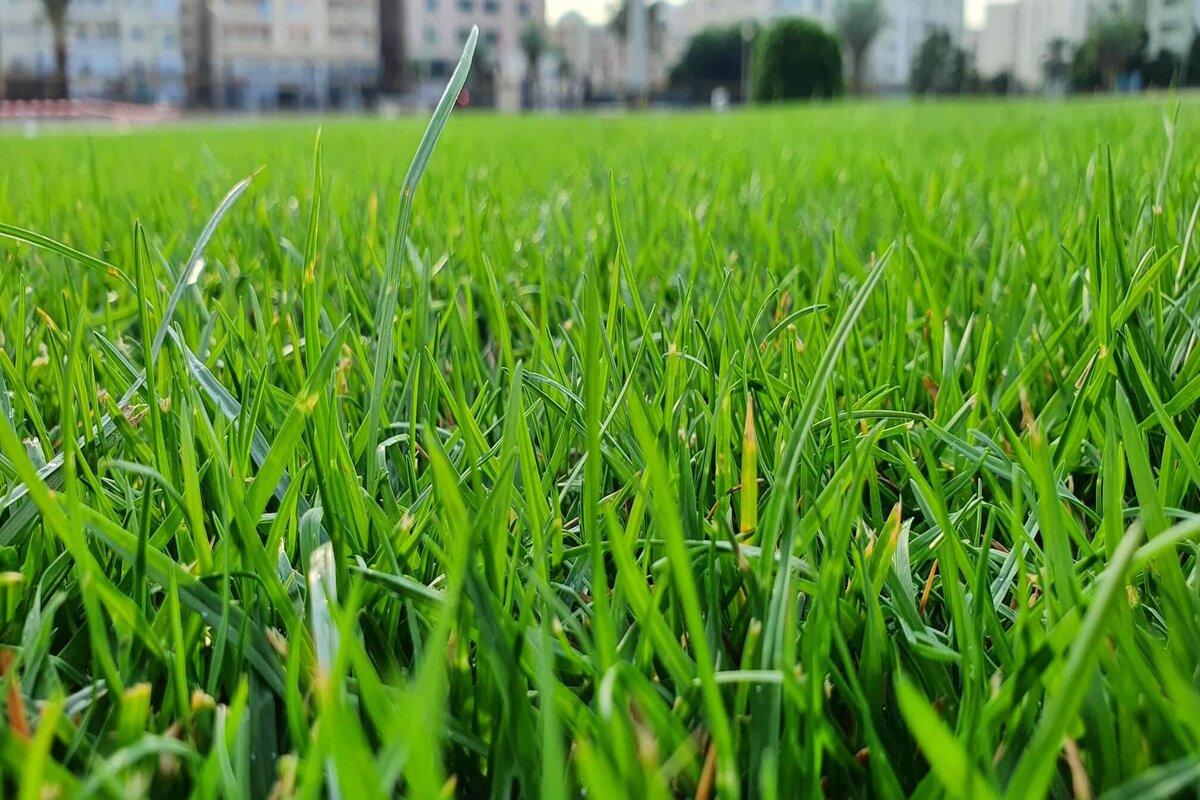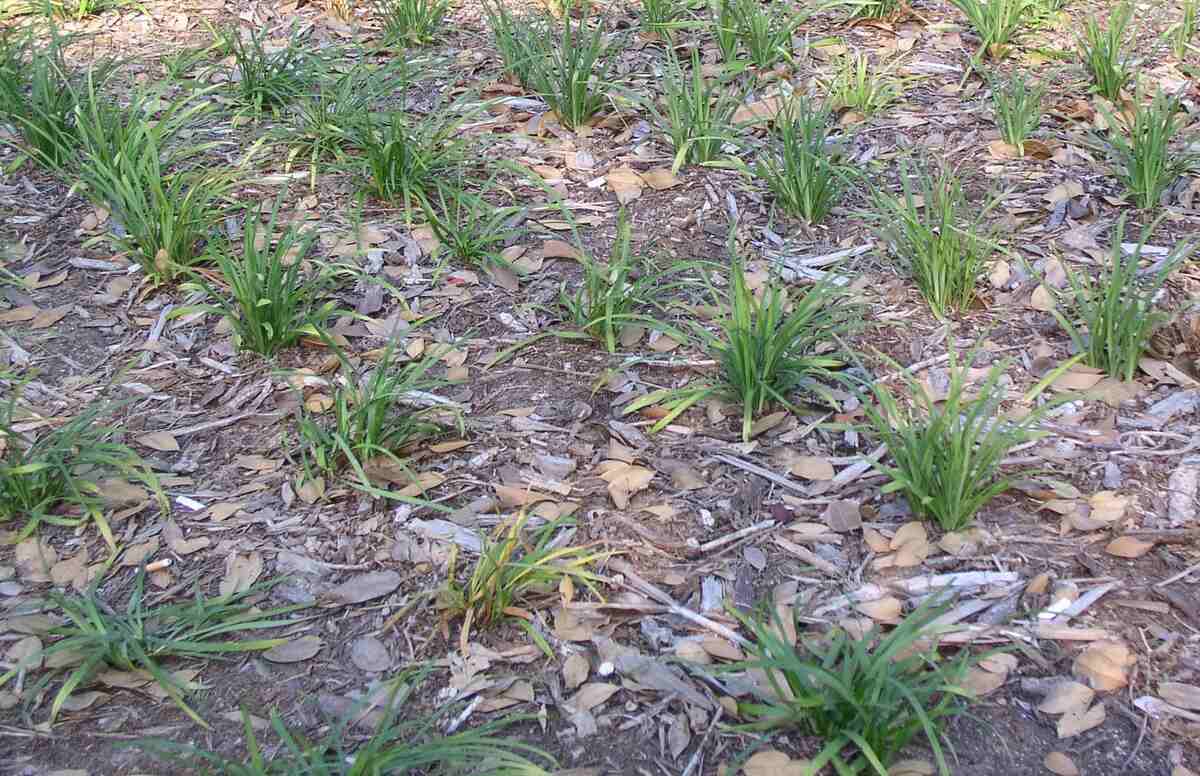
Do you have a bare area in your lawn that needs covering but don’t know how to do it? Grass plugs might be the answer. They can be a useful tool to help your lawn’s appearance while keeping costs down. In this article, we will go over what grass plugs are, how to use them, and everything else you need to know to get the best result from them.
What Are Grass Plugs?
Grass plugs are individual turf plants grown in trays in controlled conditions. They can repair damaged areas of lawns or fill in patches of bare soil.
Like sod, grass plugs are ready to plant. However, grass plugs are the middle ground between sod and seeding. The idea is simple: they’re a plug of soil, roots, and turf that you plant into the ground and then wait for them to grow and spread.
Grass plugs measure between 1.5 and 3 inches and are usually planted 9 to 12 inches apart. After planting, they spread and fill any leftover space, creating a beautiful ground cover.
They are an excellent option for establishing warm-season grasses since they have slower growing habits, and sodding can be expensive.
What Are Grass Plugs Used For?
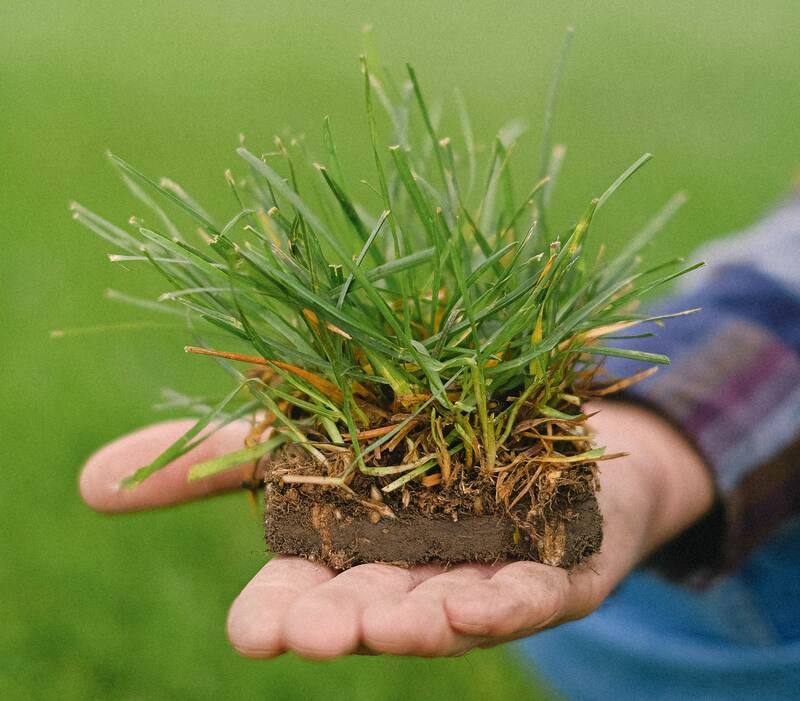
Not only are glass plugs an alternative for sod and seed, but they’re also a versatile tool that can make your lawn look smoother after damage. Here are some instances where grass plugs come in handy:
Recover Areas With Damage
There are several reasons why your lawn may have suffered a setback. For example, you might have had a pest infestation that wiped out sections of your grass or a dog that is very fond of peeing on a specific spot.
Or maybe you’ve been neglecting your lawn, and it’s looking pretty sad because of it. Poor soil conditions, improper watering practices, and too much sun exposure can cause thinning. Either way, grass plugs can be a great solution for bare patches of grass.
You can plant the individual turf plants over the damaged area and wait for them to spread out and grow into a lush green carpet that covers the bare spot. However, you must first determine what caused the damage, so you can repair it before planting something over it.
Establish a Small Lawn
If you have a small lawn and don’t want to spend money on an entire pallet of sod, you can use grass plugs. You can even use grass plugs if you have a rooftop area that needs some greenery. The possibilities are endless.
In addition, grass plugs are easy to install, and they’ll grow right where you put them. So they’re perfect for spaces that aren’t quite big enough. They can also be the ideal solution for those looking to add just a little bit of green without committing their whole property, just buy the number of grass plugs you need for that area.
Establish a Lawn When Other Options Are Not Available
Sometimes the grass type you want is unavailable in your area because it isn’t grown by any sod farms nearby. Or maybe the sod is impossible to transport to your location. Some grasses aren’t even available as seeds, such as St. Augustine grass.
That is when grass plugs come in handy. You can purchase grass plugs on the internet and have them shipped to your home from across the country, which is much easier and cheaper than transporting pallets of sod.
Tip: Some grass types are only available as plugs, such as the Bella Bluegrass, so if you want this turf grass, you must use its plugs.
Test How a Turfgrass Performs
You can also use grass plugs to test how well a specific type of turf grass grows in your yard. This way, you can test it out before spending money on a pallet or going through the trouble of planting seeds and waiting for them to grow.
You can use grass plugs to see if the grass will get used to your yard’s soil and climate or if it will thrive in an area of shade. You can do this with multiple turf grass types to see which performs best before committing.
How To Use Grass Plugs To Plant a New Lawn

Step 1: Test Your Soil
If you can test your soil before planting anything in it, do it. A laboratory soil test will tell you your soil’s pH level and whether you need to add lime or sulfur for your grass to thrive.
In addition, each type of grass has different soil pH preferences, so testing your soil could help you determine which grass would work best for your lawn.
Step 2: Measure the Area
After choosing the type of grass plugs you’ll install, it’s time to get your hands dirty. First, measure the area where you’ll be planting the plugs to determine how many plugs you need per square foot. Remember that the grass plugs must be planted 9 to 12 inches apart.
Step 3: Clear the Area
Break up any rocks with a pickaxe or shovel to clear the area where you’ll be planting the plugs, especially if you’re establishing a new lawn and not just repairing damaged areas.
Eliminate the grass in the area and get rid of weeds. You can use a non-selective herbicide like glyphosate for this step. Don’t forget to rake what’s left of the grass out of the area.
Step 4: Drill Holes
Mark where you’ll plant the grass plugs with spray paint or rocks, then use an auger bit to drill holes into the ground.
You can water the soil first to make this job more manageable and less physically demanding.
Step 5: Fertilize the Soil
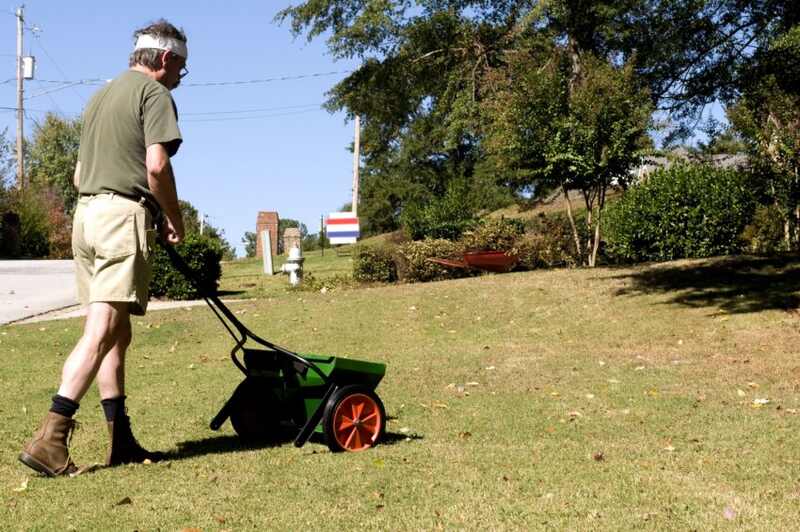
Before starting the process of planting the grass plugs, you refer to the soil test results to check the soil’s nutrients. If there’s some lack of nutrients, you can fertilize the soil before planting the plugs.
We know it sounds weird, but fertilizing your soil before planting the plugs can help their root system development, so the plugs spread more quickly. If you are unable to conduct a soil test, give preference to grass or starter fertilizers with higher amounts of phosphorus.
Step 6: Install the Grass Plugs
Now comes the best part: place the grass plugs into the holes, and cover up any loose spaces with soil. Ensure that the base of the grass blades is level with the ground.
After planting the grass plugs, soak them in water. Grass plugs are easy to install but take time to grow into full-sized plants. The grass usually takes about two weeks to spread into new areas, but it may take longer, depending on where you live.
Step 7: Water Your New Lawn
Water the newly-planted grass plugs thoroughly every morning for the next two weeks, but take rain into consideration.
Succeeding those two weeks, they’ll be established, and you can start reducing the watering frequency to encourage deep root growth. You can water the grass plugs two times a week for the next two weeks.
Warning: Don’t mow your newly planted grass plugs until at least a month has passed.
How To Use Grass Plugs To Repair Damaged Areas
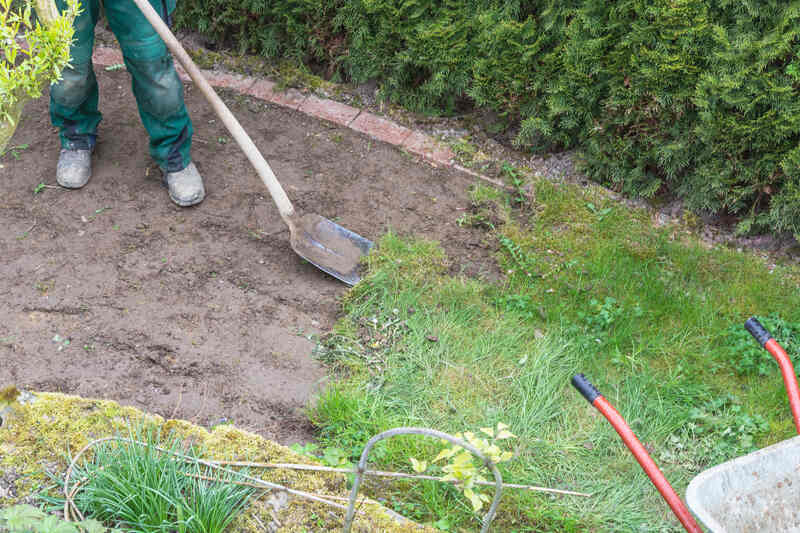
Planting grass plugs to repair damaged areas is more straightforward than planting a new lawn. However, there are still some steps you need to take.
Step 1: Find Out What Caused the Damage
The first thing you need to do is investigate what caused the damage to your lawn and determine whether or not it would be possible for new growth to take place at all.
The most common reasons for damaged grass is due to pests and weeds. Many insects cause damage to your lawns by chewing off the roots and eating away at the leaves, and many weeds will compete with your grass for water and nutrients.
Fungi can also cause damage to your lawns. For example, dollar spot will leave small light-colored areas on your property; fusarium blight is usually grayish colored and caused by drought, and brown patch disease may appear when your lawn is overwatered.
Step 2: Treat Your Lawn
Now that you know what you are dealing with, you can start with the treatment. For example, if you find an insect infestation, search for treatments for that specific insect. It may include using beneficial nematodes, neem oil, or insecticides.
For weeds, you will need to remove them with a rake and use herbicides, depending on the type of weed. As for fungus, you may need to treat the area with a fungicide.
If you found out that it was just your dog repeatedly peeing in the same spot, prevention is the best way to go. Train your dog to urinate in places where there’s mulch or gravel, or water the area immediately after they’re done.
Step 3: Install the Plugs
After you have treated your lawn and there is no threat of disease or pests, you can install the plugs.
- Step 1: Decide how many plugs you need. If you want the bare spot to recover quickly, installing more plugs close together is best. But if you’re not in a hurry, you can plug them more apart.
- Step 2: Drill holes with an auger bit so you can plant the plugs.
- Step 3: Plant the plugs, covering up loose spaces with soil.
- Step 4: Soak the plugs with water, and fertilize them with phosphorus, if needed.
- Step 5: Water every morning for the next two weeks.
When To Plant Grass Plugs
The best time to plant grass plugs is when temperatures aren’t too high. If you install grass plugs during late summer, you’ll most likely have to water it twice a day to keep drought from occurring. However, overwatering can also create prime conditions for fungus growth.
For that, it is better to plant warm-season grass plugs during late spring and no later than early summer, so they have more time to establish before winter comes and they go into dormancy. As for cool-season grass plugs, the best time to plant them is in early fall or early spring.
When To Choose Sod, Seed, or Plugs
There isn’t always a clear answer as to whether you should use sod, seed, or plugs. It depends. So here are a few points to help you choose between the three:
- Sod is best if you want an instant lawn that looks great from day one, but it will cost you more. Since sod is a layer of grass installed close to each other, there is less weed pressure as it establishes.
- Seed is cheaper than sod, but it will take longer to grow and may cause uneven growth. You will probably also have to deal with weeds competing for space.
- Grass plugs are great for small damaged areas and lawns or if you can’t get a pallet of sod delivered to you. They’re relatively inexpensive and easy to plant, and they grow quickly enough that you won’t have to wait long before they look good in your yard.
FAQ About Grass Plugs
Grass plugs usually take 10 to 20 days to take root, and the rate at which they fill in will depend on the grass species, climate, how far apart they were planted, and lawn care. For example, Zoysia plugs can take up to two years to completely fill in. Still, St. Augustine plugs spread fast, especially during summer, and will probably fill in your lawn in less than a year.
When you plant grass plugs, they need readily available nutrients. Phosphorus is a macronutrient that plays a vital role in maintaining healthy plants. It’s also essential to root growth and can help the grass plugs spread faster. However, it’s good practice to perform a soil test before applying any chemicals to your lawn.
Grass plugs can be as much as three times cheaper than sod. But they will also take longer to achieve the lush green effect sod offers.
Call a Professional
If you have little to no experience with growing grass or just don’t want to take on the job of planting grass plugs of your own, hiring a local landscaping professional with extensive experience can save you time and money in the long run. To keep your grass plugs looking their best after planting them, connect with a local lawn care professional.
Main Image Credit: blahedo / Wikimedia Commons / CC BY-SA 2.5

